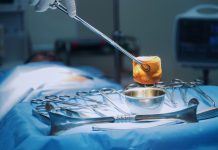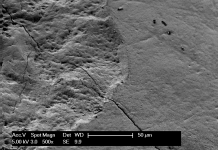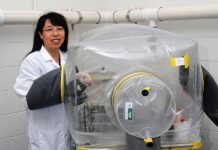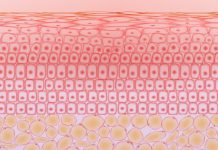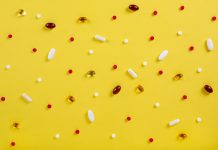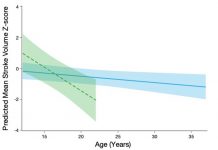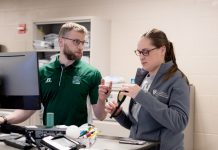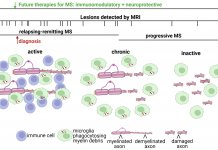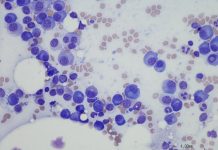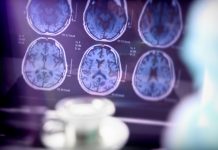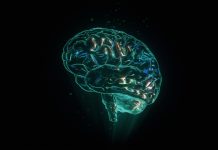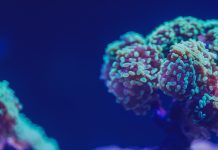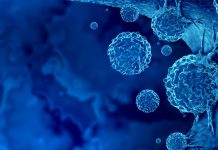Home 2023
Archives
Major depressive disorder: Brain signals as biomarkers for depression
Tiago Costa from Delft University of Technology explores the potential of neuroimaging techniques, specifically non-invasive electroencephalography (EEG), in detecting biomarkers for depression.
Dispersing the misconceptions of molecular iodine in medical uses
There are many uses for molecular iodine (I2) for infection prevention. Dispelling misconceptions about its toxicity, Dr. Jack Kessler, Chief Scientist at I2Pure, discusses the reality of I2 across medical indications and seeks to grow its application.
Keep your teeth for life: The tartar challenge
Dr. Marcel Donnet and Dr. Dixit Neha discuss how GBT can overcome the challenge of tartar removal to preserve your teeth for life.
Gnotobiotic pig models: Illuminating the enigma of human norovirus infection and immunity
Dr Lijuan Yuan and her team have studied human noroviruses (HuNoV) in gnotobiotic pigs for over 15 years. Here, she explains how such research is advancing our understanding of HuNoV pathogenesis, infectivity, and immunity.
Microbiome of the skin: The good and the bad
Chronic wounds are a significant burden to patients and health systems; Manuela Martins-Green from the University of California tells us how her research in understanding the dynamics of wound healing could aid new approaches to wound care.
Can we do drug repositioning without disease gene expression?
Chuo University’s Professor Y-h. Taguchi examines the application of cutting-edge single-cell-based measurements in drug repositioning.
Age-related changes in cardiomyopathic phenotype in patients with barth syndrome
With current treatment options for BTHS cardiomyopathic phenotype focused predominantly on alleviating symptoms, Dr Hani N. Sabbah, Director of Cardiovascular Research at Henry Ford Health, explores the potential of more targeted treatment approaches.
Decoding the brain’s role in preventing and recovering from knee injuries
Dustin Grooms, Professor of Clinical Neuroscience at Ohio University, tells us about his research on the brain’s role in shaping injury-risk movement patterns and how this knowledge could aid rehabilitation practices and the development of new therapies to mitigate the risk of knee injuries.
Targeting the central nervous system: The future of therapeutic strategies for MS
Tara M. DeSilva from the Department of Neurosciences, Cleveland Clinic, looks at the future of therapeutic strategies for MS, focusing on targeting the central nervous system.
Developing novel therapies for childhood cancers
Dr Peter J Houghton from Greehey Children’s Cancer Research Institute discusses the obstacles in developing new treatments for childhood cancers and new approaches in preclinical testing.
The mechanisms and benefits of exercise
At Wayne State University, Robert Wessells and his team are making significant strides in identifying potential exercise mediators or mimetics that could help mitigate pathologies resulting from prolonged sedentary periods.
Lecanemab and other treatments: Glimmers of hope for alzheimer’s patients
Effective treatments for amyloid-associated neurological diseases are desperately needed; H. Robert Guy, CEO of Amyloid Research Consultants, talks us through the obstacles and opportunities associated with structure-based drug design.
Pain regulation and research: Decoding the brain’s response to pain
Professor Patrick Stroman from the Centre for Neuroscience Studies at Queen’s University shares insights into his research on the neural basis of human pain and pain regulation, which is supported by functional magnetic resonance imaging.
The evolution of continuous glucose monitoring and advancing monitors
Afon Technology Ltd explains how its continuous glucose monitoring (CGM) device provides a non-invasive and pain-free solution for people with diabetes.
What is at stake in the psychedelic renaissance?
Professor Erika Dyck, Canada Research Chair in the History of Health & Social Justice, discusses the extensive history and growing medical application of psychedelics known as the psychedelic renaissance.
Overcoming obstacles in rare disease clinical trials
With an urgent need to develop new treatments for people with rare diseases, the University of Birmingham’s Professor Timothy Barrett explains how a new consortium will provide a step change in the delivery of rare disease clinical trials.
Healthy aging and physical activity practice: The missing link
Isabelle J. Dionne, PhD, Professor, Université de Sherbrooke, walks us through physical activity practice and how it impacts research on healthy aging.
Bacteriophages: Nature’s remedy for tackling superbugs and antimicrobial resistance
Given the increasing threat of antimicrobial resistance, Gunther Vanwezer, CEO of Vésale Bioscience, explains how bacteriophages offer a promising natural solution and outlines the company’s efforts to become a pioneer in the development of innovative, personalised and sustainable phage-based therapy solutions.
Ultravision joins the fight against peritoneal cancer
Considering the high, unmet medical need associated with peritoneal metastases, Dr Dominic Griffiths, CEO of Alesi Surgical Ltd, outlines how the company’s innovative Ultravision technology could dramatically improve clinical outcomes for patients with the disease.
Patients with diabetes in rural underserved areas
Richard J. Santen, MD, Emeritus Professor of Medicine at the University of Virginia in Charlottesville, Virginia, USA, delineates the characteristics of patients with diabetes residing in rural underserved areas, including the role of meal replacements for weight loss.



